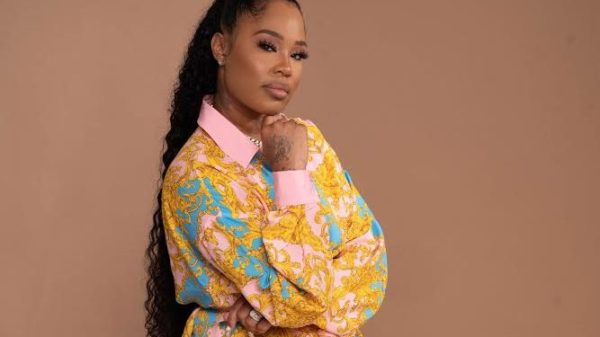How important is social media marketing for your business? According to McKinsey & Company, more than 80% of companies that use social media effectively benefit their overall strategic objectives.
Whether you’re looking to increase sales or build brand recognition, social media can play an enormous role. Recent studies show that 84 percent of consumers believe recommendations from friends and family are more trustworthy than anything else.
But how do you build your strategy around social media?

How do you get people to actually pay attention to the content that matters most for your brand? To use social media effectively, businesses must understand just how much potential it has.
Savvy marketers have taken on this challenge–creating a marketing strategy that utilizes the unique aspects of social media to further brand awareness, build relationships with their customers and increase sales.
Today’s consumers are digital natives–around 72% of them use social networks regularly. That means your potential audience has never been bigger. Forrester Research estimates that by 2019 there will be nearly five billion social media users.
That’s a huge market to attract customers–if you know how to reach them effectively.
Social media offers four main opportunities to make or break your business: building brand awareness, promoting product launches, engaging with customers, and creating new revenue streams.
To take full advantage of these tools, however, a social influencer strategy is necessary. But how do you create a successful strategy?
Let’s start with the basics:

What exactly is social influencer marketing? It refers to a strategy that identifies individuals who have a concentrated amount of influence over your target audience and then leverages their reach by having them share information about your brand or products. This concept isn’t new–celebrities have been endorsing brands for years.
But the difference is that now anyone can do it online–and without the fame or fortune. According to a study by crowdsourcing platform Nestio, 90 percent of social media users are more likely to purchase from a company they follow on social media. Contrast this with Facebook ads, which only produce .0004% conversion rates.
Since influencers are real people who already have an established following, they’re much more effective than traditional advertising when trying to reach your target market.
Identify Key Players

Essentially, influencer marketing involves identifying key players in your niche and then providing them with something valuable in exchange for their help spreading the word about your business.
That something could be free product samples, access to exclusive materials, or favorable pricing for bulk orders.
Whatever you decide, keep in mind that your goal is to create long-term relationships with influencers and not just one-time publicity stunts.
Form Long Term Relationships with Influencers

The best way to form a lasting relationship with an influencer is by providing them with something of value related to their primary area of expertise.
For example, if they sell organic peanut butter online, you shouldn’t offer them monthly coupons for your toaster ovens.
It would make sense–the products would work well together–but it doesn’t align with their target audience. Instead, find ways in which your business can solve the problems they encounter daily while providing something that people will actually use regardless of whether or not they purchase your product.
This will help you form a lasting relationship and influence the influencers to promote you on their social media accounts and within their communities.
Find Relevant Influencers

A good way to find relevant influencers is to ask people who share similar interests for their recommendations. If someone likes your brand, there’s a high chance that they know others who would enjoy it too.
Suppose you’re gearing up for a new product launch, research local business associations or industry-related organizations in your area as well.
The goal here isn’t simply to get exposure–but rather to create an actual connection with them that demonstrates how much value you place in their opinion and advice.
Once you’ve settled on some key connections, it’s time to develop an influencer strategy. Here are four important steps:
Identify Your Target Niche

Who exactly is going to be interested in what you’re selling?
What common interests do they have? For example, if you launch a line of organic peanut butter, it would make sense to contact people passionate about vegan and vegetarian diets.
Likewise, if you sell vitamins or pain relievers, it might be helpful to contact celebrities with large fan bases who advocate health and wellness–even if they aren’t necessarily known for promoting products specifically related to your niche.
This will create a mutual trust that makes them more likely to share your information with their audiences since they know that the product aligns with their values.
Research Influential Individuals

Use social media and other online resources to find people who match your identified description in step one.
Take note of their followers–how many do they have? What is their role in the community (celebrity, professional athlete, politician, etc.)?
Make a list of at least 10 influencers that appear to be a good fit for your business, and then investigate further while putting together an outreach plan.
The goal here isn’t to gather as much information about them as possible–you don’t want it to seem like you’re stalking them–but rather so that you can determine the best way to reach out without seeming overly desperate or insincere.
Outreach

Once you’ve carefully crafted a message that not only expresses your interest and enthusiasm but also reveals how you can help them, it’s time to reach out. The best way to do this is by creating a list of contacts with all of the information that you have on them, including names and social media channels.
If there are specific ways in which your business aligns with their interests and values, be sure to the point that out as well.
Follow up with each one at least once every couple of weeks because if they don’t hear from you soon enough, they might assume that you aren’t serious about building a relationship–which means they’re less likely to respond later on down the road when you really need their help promoting something new.
Monitor Influencer Performance

Like any other marketing strategy, it’s important to constantly monitor your progress and adjust based on what you learn.
What was the response rate of your initial outreach emails? Did any of them reach out to their communities asking for feedback or recommendations regarding your product?
How did they share your content across social media when you approached them with an opportunity that might be mutually beneficial? Take notes on all of these interactions from beginning to end.
Once you have a rough draft of this information, update it every time something new happens–whether it’s positive or negative feedback that you receive from influencers, relevant news that could influence how they respond in the future, etc.–so that you can track trends over time.
This will help you determine which strategies work best for promoting whatever kind of products and services you’re selling and which aren’t worth the effort.
Social influence is a growing part of our society. It’s an effective way to promote your brand, grow your audience, and increase sales if you know how to use it properly.
By using a witty time of voice in your writing style along with helpful tips for creating a successful influencer strategy, you can align yourself with some of the most sociable people on social media so that they will be more likely to work with you in the future when promoting any business entity.
Opinions expressed by AsianBlurb contributors are their own.
Maham Qasim is an English Literature and Economics student at Forman Christian College University with an interest in writing. Maham was born in Pakistan and raised in Saudi Arabia and is now pursuing her education.




































